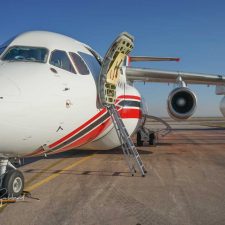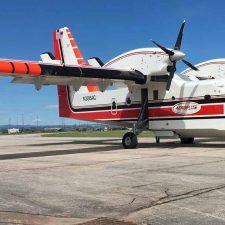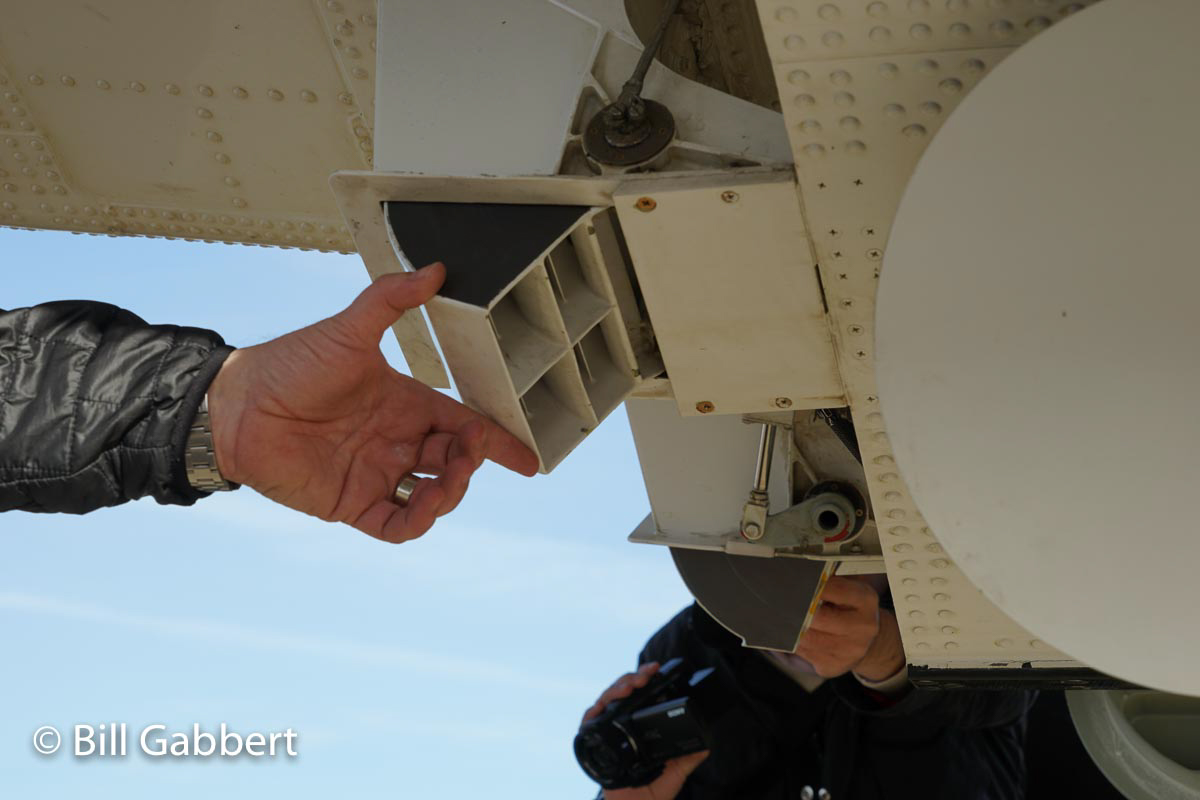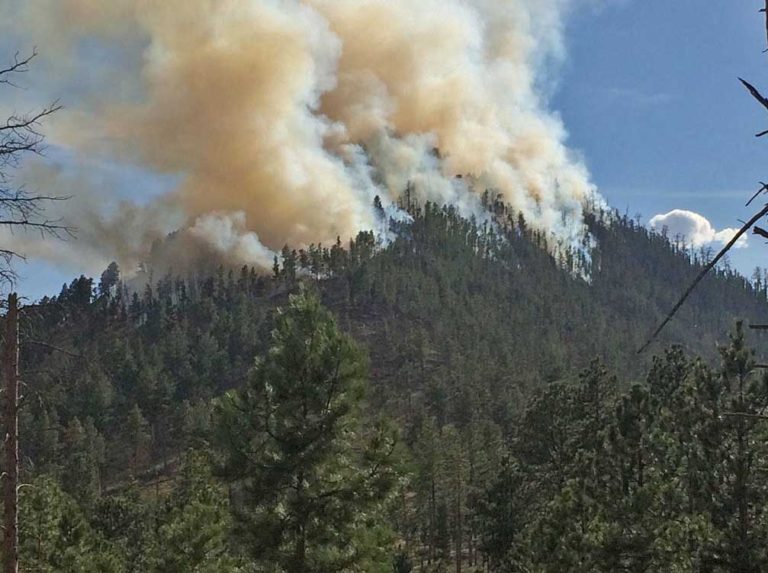Above: Air Tanker 163, an RJ85, at Rapid City December 12, 2017.
(Originally published at 12:15 p.m. MST December 13, 2017)
When the Legion Lake Fire broke out in Custer State Park in the Black Hills of South Dakota December 11 it grew quickly in strong winds. The Incident Commander didn’t hesitate to order additional resources, including two large air tankers. Tankers 101, an MD-87, and 163, an RJ85, responded from Southern California, arriving late in the afternoon. They were not used that day since the lead plane did not arrive until much later. The tankers also were not used the following day. But the fire blew up the night of the 12th, expanding from 4,000 acres to over 40, 000 acres. As this is written around noon on December 13, the Incident Management Team said they will be used if needed.
On December 12 we visited the Rapid City Air Tanker base while the tankers were parked there. We talked with MD-87 pilot Brent Connor who told us Erickson Aero Tanker expects to have their fifth MD-87 in service by the 2018 fire season. Tanker 101 was the first they built; the others are 102, 103, 105, and 107.
Articles on Wildfire Today about the Legion Lake Fire are tagged “Legion Lake Fire”.
Each of the recently developed jet-powered air tankers have unique retardant delivery systems, and the MD-87 is no exception. As you can see in the photo gallery (click on the photos to see larger versions) it has two imposing tubes (for lack of a better term) in addition to a tank under the cabin floor and a pod under the plane’s belly. Those three reservoirs hold 3,000, 1,000, and 700 gallons, respectively, for a total of 4,700 gallons.
To mitigate the issue of retardant dispersing over the wing, which introduced the possibility of it being ingested into the engines, they had an external tank, or pod, fabricated and installed below the retardant tank doors, lowering the release point by 46 inches.
Mr. Connor said that at this time they are limited to dropping 3,100 gallons, and they never have to download due to density altitude. After modifications are made to the system, they expect to be cleared to carry 4,000 gallons. He said that to get to the present stage of development the FAA required 80 hours of flight testing.





